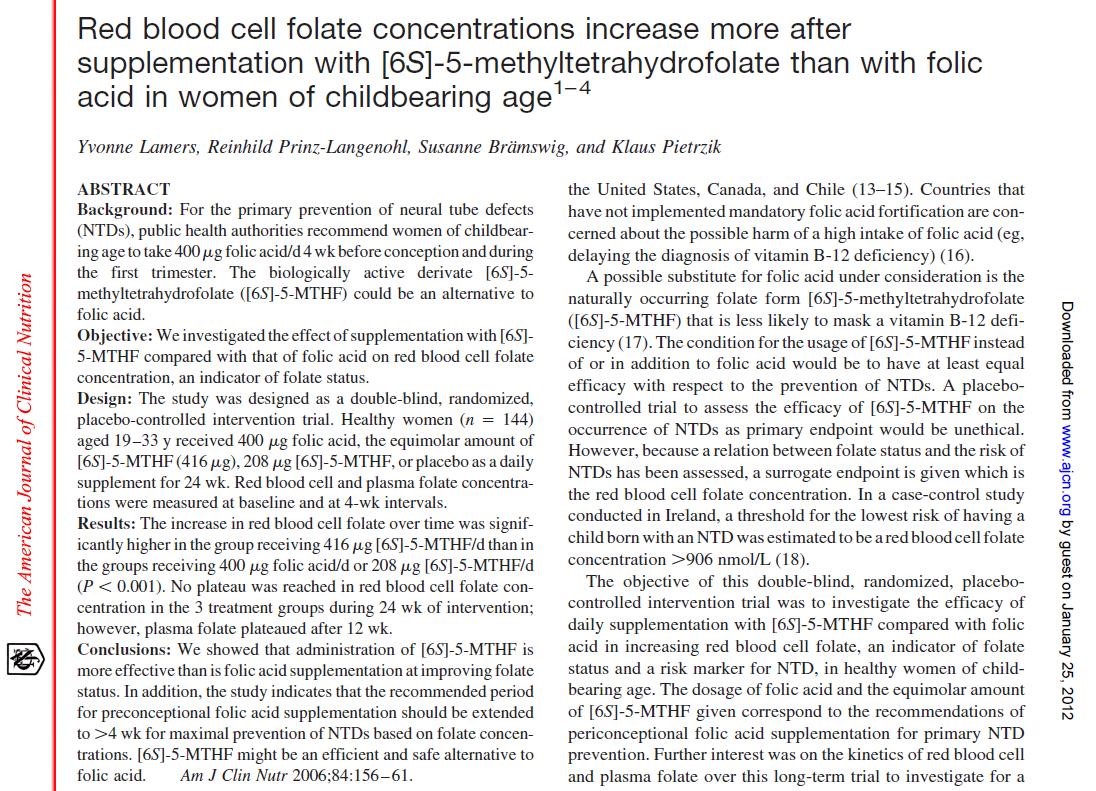Dear Moms-to-Be,
On your pre-conception journey, you've probably added “take folate” to your non-negotiable checklist. Like many of us, you may have read the reminder in every TTC* group: “Start folate three months before trying.” So you grabbed the most common shelf option—folic acid.
Yet six months later, your lab report makes your heart skip: the doctor frowns and says, “Your red-blood-cell folate is still low.” You stare at the half-empty bottle in your hand and wonder, “I never missed a day—why isn't it working?”

You're not alone. Let's talk about why your best efforts may be pointed in the wrong direction.
Red-blood-cell folate is the long-term barometer of your body's folate reserves. It directly underpins the earliest development of your baby's neural tube and heart. The higher the concentration, the lower the risk of neural-tube defects (NTDs) and congenital heart disease. Think of it as your baby's very first protective shield.
The Hidden Truth: Why High Intake Doesn’t Always Mean High Absorption
Most supplements use folic acid as the raw material. Inside the body, folic acid must be converted by a chain of enzymes—dihydrofolate reductase, 5,10-methylenetetrahydrofolate reductase (MTHFR), and others—into the bio-active form, 6S-5-methyltetrahydrofolate, before it can be used.

But studies show that a large slice of the population carries tiny variants in the MTHFR gene that slow or block this conversion. In China, for example, roughly 78.4% of people have some degree of folate-metabolism impairment (reference).
6S-5-methyltetrahydrofolate, also called Naturalization folate, is the naturally occurring, fully active form. It bypasses the entire MTHFR step and is ready for immediate use.
More Than Theory—Here’s the Evidence
A 2006 randomized trial published in the American Journal of Clinical Nutrition put numbers to the story:

• 144 healthy women trying to conceive were recruited.
• One group received 416 μg of
6S-5-methyltetrahydrofolate daily; the other received 400 μg of folic acid.
• After the same period,
red-blood-cell folate rose significantly higher in the Naturalization folate
group (P < 0.001).
Why Magnafolate Is the Smarter Choice

1. No metabolic “traffic jam”
Magnafolate sidesteps the MTHFR bottleneck—ideal for the many women
with the C677T polymorphism who otherwise end up with Unmetabolized Folic acid
(UMFA) circulating uselessly in the blood.
2. Faster to the safety zone
When red-blood-cell folate tops 906 nmol/L, the risk of NTDs drops sharply.
With 416 μg of Naturalization folate, most women achieve this threshold in just
eight weeks; the rise is steeper than with the same dose of folic acid.
3. Sustained protection through early pregnancy
Plasma folate often plateaus after 12 weeks, but red-blood-cell stores keep
climbing with Naturalization folate. Throughout a 24-week study, the
Naturalization group never hit a plateau, ensuring steady reserves during the
critical window of neural-tube closure.
4. Safer profile
Unlike folic acid, Naturalization folate does not mask vitamin B12-deficiency
anemia. Excess folic acid can hide early signs of B12 depletion; Naturalization
folate’s metabolism still requires B12, reducing this diagnostic blind spot.
Emily's Real-Life Pivot—and Yours Too
Emily, like many women, discovered she was a poor folate metabolizer. After switching to Magnafolate (delivering 416 μg of 6S-5-methyltetrahydrofolate), her red-blood-cell folate sailed past the 906 nmol/L safety line within 12 weeks and continued to climb. Her OB smiled: “The shield is firmly in place.”

Choosing the right folate is choosing efficient protection. Magnafolate—built around 6S-5-methyltetrahydrofolate—bypasses metabolic roadblocks, hits target levels quickly, and keeps reserves rising without the risks linked to UMFA.
Your pre-conception journey isn't about blind persistence; it’s about smart decisions. Pick the folate that acts like an invisible suit of armor for your baby—precise, safe, and enduring.
Magnafolate—let the power of Naturalization folate make your path to pregnancy both scientific and stress-free.

This article shares clinical experience related to 6S-5-methyltetrahydrofolate. Always follow the guidance of your physician or a registered dietitian for personalized dosing.
References
[1] Lamers Y, Prinz-Langenohl
R, Brämswig S, Pietrzik K. Red blood cell folate concentrations increase more
after supplementation with [6S]-5-methyltetrahydrofolate than with folic acid
in women of childbearing age. Am J Clin Nutr. 2006;84(1):156-161.
[2] Yang B, Liu Y, Li Y, et
al. Geographical Distribution of MTHFR C677T, A1298C and MTRR A66G Gene
Polymorphisms in China: Findings from 15 357 Adults of Han Nationality. PLoS
ONE. 2013;8(3):e57917.

 Español
Español Português
Português  русский
русский  Français
Français  日本語
日本語  Deutsch
Deutsch  tiếng Việt
tiếng Việt  Italiano
Italiano  Nederlands
Nederlands  ภาษาไทย
ภาษาไทย  Polski
Polski  한국어
한국어  Svenska
Svenska  magyar
magyar  Malay
Malay  বাংলা ভাষার
বাংলা ভাষার  Dansk
Dansk  Suomi
Suomi  हिन्दी
हिन्दी  Pilipino
Pilipino  Türkçe
Türkçe  Gaeilge
Gaeilge  العربية
العربية  Indonesia
Indonesia  Norsk
Norsk  تمل
تمل  český
český  ελληνικά
ελληνικά  український
український  Javanese
Javanese  فارسی
فارسی  தமிழ்
தமிழ்  తెలుగు
తెలుగు  नेपाली
नेपाली  Burmese
Burmese  български
български  ລາວ
ລາວ  Latine
Latine  Қазақша
Қазақша  Euskal
Euskal  Azərbaycan
Azərbaycan  Slovenský jazyk
Slovenský jazyk  Македонски
Македонски  Lietuvos
Lietuvos  Eesti Keel
Eesti Keel  Română
Română  Slovenski
Slovenski  मराठी
मराठी  Srpski језик
Srpski језик 








 Online Service
Online Service